August 5, 2019, by Kathryn Steenson
MRI Collections Project: the papers of Raymond Andrew
Professor E. Raymond Andrew was one of the early founders of nuclear magnetic resonance (NMR) research at the University of Nottingham, and Manuscripts and Special Collections (MSC) are fortunate to have his papers amongst our collections. As part of the MRI Collections Project which is currently under way, Archivist Zoe Ellis describes how the team have been cataloguing a major accrual to his papers, and enhancing the catalogue of the existing collection.
Andrew was born in Boston, Lincolnshire, on 27 June 1921. He received a first class degree in Natural Sciences from the University of Cambridge in 1942. For the remainder of the Second World War he worked at the Telecommunications Research Establishment in Malvern, which later became the Royal Radar Establishment. Amongst his papers are copies of the reports he produced whilst at Malvern, with titles such as ‘Measurements on the Ionisation and X-Band Attenuation of Gun-Flashes’.
After the war Andrew completed his doctorate at Cambridge, then went to Harvard University in 1948 on a Commonwealth Fund Scholarship. He did postdoctoral research into NMR in the laboratory of Professor Edward M. Purcell, who became one of the main inspirations behind his work.
Returning from Harvard in 1949, Andrew took up a lectureship at St Andrews University, and in 1954 was appointed as Professor and Head of the Physics Department at the University College of North Wales, Bangor. In the following year he published the first textbook on nuclear magnetic resonance, which provided a clear introduction to the subject and was reprinted four times.
Whilst at Bangor, Andrew initiated a technique for studying solids using NMR which involved rapidly spinning samples at an angle to a magnetic field. This technique, which produced a much higher resolution in the NMR spectra of solids, was called ‘magic angle spinning’. It is perhaps the development for which Andrew is best known today.
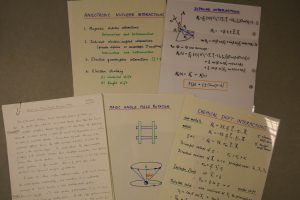
Notes and overhead projector transparencies for a lecture on ‘Basics of Magic Angle Spinning NMR’, given in Heidelberg in September 1993 (Ref: PRA/9/37)
In 1964, Andrew was appointed as Lancashire-Spencer Professor of Physics and Head of the Physics Department at the University of Nottingham. Under his leadership Nottingham developed into a hub for NMR research. By the 1970s, the potential of NMR as an imaging tool was becoming clear, and the Department became heavily involved in research into magnetic resonance imaging (MRI), which is the basis of the technology behind the MRI scanners used in hospitals today. There were three groups active in MRI imaging research at Nottingham in the 1970s, led by Raymond Andrew, Peter Mansfield and Bill Moore. Andrew’s group was one of the first in the world to obtain detailed images of the human wrist and brain.
In 1983, Andrew left Nottingham and moved to the University of Florida as Graduate Research Professor, where he continued his research into magnetic resonance imaging and helped to establish the US National High Magnetic Field Laboratory in Tallahassee.
Andrew appears to have been much in demand for his talks and lectures. His collection contains lecture notes, and other material such as overhead projector transparencies, for more than one hundred lectures which he delivered around the world. There are also around 750 35 mm slides which he used to illustrate his lectures. These include several sets of MRI images of parts of Andrew’s own body, such as his head and chest, indicating that he volunteered himself as a subject in the early days of MRI scanning.
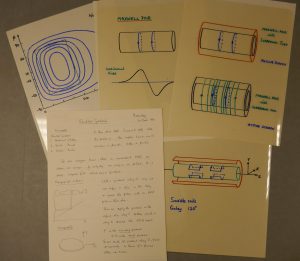
Notes and overhead projector transparencies for a lecture on ‘Shielded Gradients’; 1990 (Ref: PRA/6/2/25)
Andrew was also a prolific correspondent, exchanging letters with scientists across the globe from the 1950s to the 2000s. He filed most of his correspondence along geographical lines, creating files with titles such as ‘French Scientists’, ‘Scientists in Japan’, ‘Europe’ and ‘Scientists in Other Countries’. He also kept some individual files, particularly for correspondence with former colleagues and students with whom he continued to keep in touch.
Andrew was a founder member of several societies related to the study of magnetic resonance, such as the British Radiofrequency Spectroscopy Group, the Groupement AMPERE (where AMPERE stands for ‘Atomes et Molécules Par Etudes Radio-Electriques’), and the International Society of Magnetic Resonance. His papers relating to these societies form part of his collection at MSC.
Andrew remained a proud son of Boston, a distinction he shared with Sir Joseph Banks, the botanist who took part in Captain James Cook’s exploration of Australia. The collection contains a file relating to a poster paper that Andrew gave at the Sir Joseph Banks 250th Anniversary Conference held by the Royal Society in 1993, entitled ‘Sir Joseph Banks and Boston’, together with display boards relating to the paper.
Work on the MRI Collections Project is due to finish at the end of September 2019, when the catalogues of our MRI collections will be available online, and access to the collections will be possible by appointment in the Manuscripts and Special Collections Reading Room.
No comments yet, fill out a comment to be the first

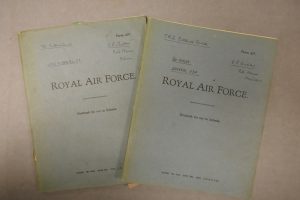
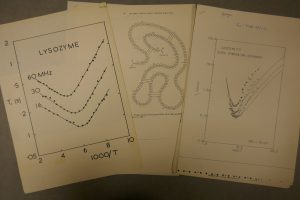
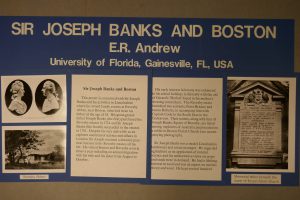
Leave a Reply